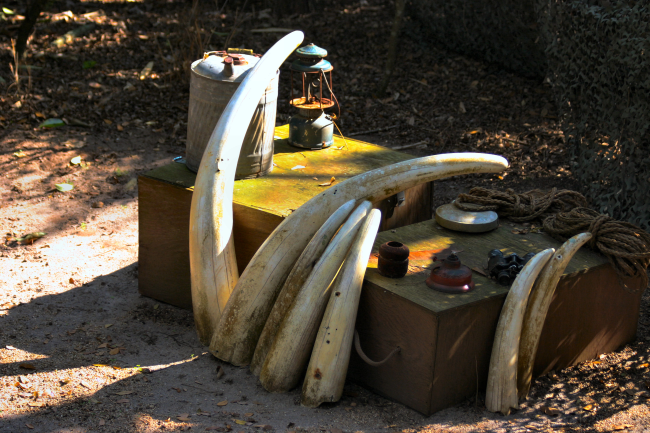[et_pb_section fb_built=”1″ admin_label=”section” _builder_version=”4.16″ global_colors_info=”{}”][et_pb_row admin_label=”row” _builder_version=”4.16″ background_size=”initial” background_position=”top_left” background_repeat=”repeat” global_colors_info=”{}”][et_pb_column type=”4_4″ _builder_version=”4.16″ custom_padding=”|||” global_colors_info=”{}” custom_padding__hover=”|||”][et_pb_text admin_label=”Text” _builder_version=”4.26.1″ background_size=”initial” background_position=”top_left” background_repeat=”repeat” hover_enabled=”0″ global_colors_info=”{}” sticky_enabled=”0″]

In a perfect world, “poaching” would only refer to a way to cook an egg. However, on a planet filled with beautiful animals, there is unfortunately a different meaning, since people will pay a high price for their unique fur coats, skins, tusks, talons and body parts. The word “poaching” actually comes from an old English word pocchen which meant “bagged” or “caught in a bag.” Poaching has existed for centuries, long before even the literary hero Robin Hood survived on venison illegally killed on the king’s land, to modern-day black market elephant-tusk harvesters in Africa. Yet while there are methods of poaching that seem permissible (even practical if a person is starving), others are horribly cruel; the definition of poaching reaches far and wide.
Acts of Poaching
The current concept of “poaching” basically refers to the unlawful killing of wildlife. This below list includes the other actions which are considered reprehensible poaching activities.
- Fishing or hunting without a license.
- Fishing or hunting in a region where no license may legally be issued, or where the land is restricted, protected by the government, or privately owned by someone other than the hunter.
- Hunting, fishing, capturing or trapping wildlife without being in season.
- Firing weapons from a car, airplane, or another moving vehicle.
- Killing, catching or trapping (or the attempt thereof) animals tagged by educational institutions, or wildlife research organizations, etc.
- Hunting, fishing, trapping, or catching any animal identified as endangered, or protected by the International Union for the Conservation of Nation (IUCN).
Note: Under the Endangered Species Act (1973) such activities are considered wildlife crimes and are punishable by law.
Certain behaviors and tactical actions of hunting are also prohibited, as they are considered to be poaching of another nature. This includes the use of poisons, explosives, machine guns, nets, snares and traps while hunting or fishing. Drugging, caging or marring a live animal with the intent to kill it later on is also considered poaching. The implementation of decoys, calls, baiting, and using spotlights to impair an animal’s vision is considered “animal abuse” and is illegal in many states.
Motives: Why Poach?
While the world is not entirely peopled with crooks, there are those who enjoy exacting cruelty on innocent creatures. While many hunters do so within the limits of the law, others enjoy killing for the sport, and allow animals to suffer inhumanely merely for their entertainment. Some hunt out of what might be considered necessity, to ward off pesky animals or threatening predators, or in particularly impoverished areas, simply to put food on their family’s table.
However, the most common motivation for poaching, is for monetary gain. Poachers around the world make a killing (literally) by selling animal pelts and body parts for a hefty price. Even unusual items such as tiger eyes, rhino tusks, tiger organs, paws and claws, bear gallbladders, tortoiseshells, and dried seahorses, are sold in Asia on the black market because of their integral importance in Eastern medicine. The belief some hold that Rhino horn dust will cure cancer, causes that product to sell for as much as $60,000. Both rhinos and elephants are some of the most at-risk animals because of their ivory tusks. Big horned sheep antlers also fetch a high price of $20,000 when sold illegally.
China exports a high amount of animal pelts worldwide (including minks, foxes, and raccoon-dogs raised on Chinese fur farms ), while they import a staggering amount of ivory poached from animals elsewhere in the world. Recent studies conducted by The New York Times has shown that China makes jewelry and hand-crafted items from nearly 70% of the world’s poached ivory.
The finery associated with rare coats, antlers, tails, skins, and unique feathers or shells, causes the black market to thrive on the sale of poached items, as the great wealth and pomp of the owner. Hundreds of thousands of wild animals are being sacrificed to human demands for fashion, grandeur, and medical uses. The more people become aware of the endangered wild cats and wild dogs, as well as the plethora of other victims, the better our chance of stopping this cruelty will be.
[/et_pb_text][/et_pb_column][/et_pb_row][/et_pb_section]

